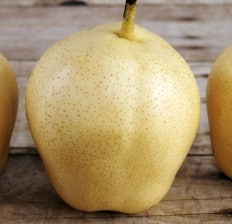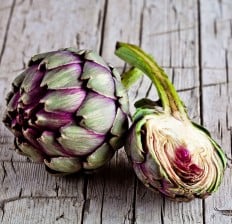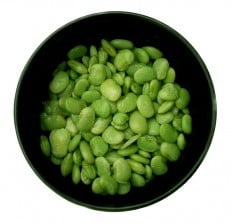Are you getting enough fiber?
Fiber, we know we need it, but even with all the fiber-added foods out there, most people are still deficient.
The modern western diet has left Americans with a serious nutrient deficiency, fiber. It is estimated that less than 5 percent of Americans get the recommended amount of dietary fiber each day. High fiber foods help to guard against cancer, heart disease, diverticulosis, kidney stones, PMS, obesity, and help to support a healthy digestive tract. Fiber is much more than just a regulator.
Benefits of High-Fiber Foods
*The following fiber content is based on Harvard: Fiber Content of Foods in Common Portions, except where otherwise noted.
Many processed foods including cereals and breads, have added fiber. These sources of fiber used in for this supplementation are not the healthiest. In fact, just as with popular fiber supplements, many ingredients may be harmful to your health. So, as it is with all nutrients, it is much better to eat fresh foods, rich in the nutrients you need.
There are many lists out there of high fiber foods; this list is focused on perhaps lesser-known fiber stars. All of the foods listed below are not just high in fiber, but essential nutrients that help our bodies thrive.
Ultimate High Fiber Foods
HIGH FIBER FOODS: Fruits

1. Avocados
Total Dietary Fiber: 10.5 grams per cup (sliced)
Notable Nutrients: Vitamin C, Vitamin E, Vitamin B6, Folate, Vitamin K, Potassium
The fiber content of avocados varies depending on the type. There is a difference in fiber content and makeup between the between the bright green, smooth skinned avocados (Florida avocados) and the smaller darker and dimpled variety (California avocados). Florida avocados have significantly more insoluble fiber than California avocados. In addition to the fiber, avocados are packed with healthy fats that help to lower cholesterol and reduce the risk of heart disease. Start incorporating fresh avocado into your diet with some of these avocado recipes.

2. Asian Pears
Total Dietary Fiber: 9.9 grams of fiber per medium fruit, skin on.
Notable Nutrients: Vitamin C, Vitamin K, Omega 6 fatty acids, Potassium
Crisp, sweet, and delicious, Asian Pears contain high levels of fiber, but also is rich in Omega-6 fatty acids (149 mg per serving) associated with healthy cells, brain and nerve function.(1) The American Heart Association recommends at least 5%-10% of food calories come from Omega 6 fatty acid foods.

3. Berries
Raspberry Total Dietary Fiber: 8 grams of fiber per cup
Raspberry Notable Nutrients: Vitamin A, Vitamin C, Vitamin E, Vitamin K, Folate, Total
Blackberry Dietary Fiber: 7.6 grams of fiber per cup
Blackberry Notable Nutrients: Vitamin C, Vitamin K, Omega 6 fatty acids, Potassium, Magnesium, Potassium, Manganese
Blackberries are high in Vitamin K that is associated with boosting of bone density, while the raspberry’s high manganese levels help to support healthy bones, skin, and blood sugar levels. All of these benefits, in addition to providing a great tasting way to add fiber to your diet. Try my easy Blackberry Sorbet recipe; frozen raspberries, or a combination of the two would work well too.

4. Coconut
Total Dietary Fiber: 7.2 grams per cup
Notable Nutrients: Manganese, Omega-6 fatty acids, Folate, and Selenium
Coconut products are growing in popularity, with good reason. If you have not yet started consuming coconut, read the 8 reasons you should be eating coconut everyday. Coconut has low glycemic index, and is easy to incorporate into your diet; with 4 to 6 times the amount of fiber as oat bran, coconut flour and grated coconut is a great way to add a healthy natural fiber to your diet. In countries where coconut is a dietary staple, there are fewer incidents of high cholesterol and heart disease. For most baking recipes, you can substitute up to 20% coconut flour for other flours.

5. Figs
Total Dietary Fiber: 14.6 grams of fiber in 1 cup dried figs, evenly distributed between soluble and insoluble fiber.
Notable Nutrients: Pantothenic acid, Potassium, Manganese, Copper, B6
Dried figs and fresh figs are a great source of fiber. Unlike many other foods, figs have a near perfect balance of soluble and insoluble fiber. Figs are associated with lower blood pressure and protection against macular degeneration, in addition to the benefits of the fiber. Even if you don’t like dried figs, fresh figs are delicious and can be enjoyed on top of cereals, salads, and even stuffed with goat cheese and honey for a special dessert.
HIGH FIBER FOODS: Vegetables

6. Artichokes
Total Dietary Fiber: 10.3 grams of fiber per medium artichoke
Notable Nutrients: Vitamins A, C, E, B, K, Potassium, Calcium, Magnesium and Phosphorous
Low in calories, rich in fiber and essential nutrients, artichokes is a great addition to your diet. Just one medium artichoke accounts for nearly half of the recommend fiber intake for women, and a third for men. In addition, artichokes are one of the top 10 high antioxidant foods.

7. Peas
Total Dietary Fiber: 8.6 grams per cooked cup; majority insoluble fiber
Notable Nutrients: Vitamin C, Vitamin K, B6, Thiamin, Manganese, Folate, Vitamin A, Protein
The humble green pea is packed with fiber, and powerful antioxidants, anti-inflammatory properties and phytonutrients that support wellness. Frozen peas are available year round, making them ideal to incorporate into your diet. Lightly steam peas and add to soups, and salads. They add a gentle sweetness, while providing nearly 100% of your daily-recommended Vitamin C, and over 25% of Thiamin and Folate. (Recommended photo: raw in pod)

8. Okra
Total Dietary Fiber: 8.2 grams per cup
Notable Nutrients: Vitamins A, C, K, Riboflavin, Thiamin, Niacin, Calcium, Iron, Phosphorous, Zinc, Protein
In the southern part of the United States, okra is a staple, and for good reason. Just one cup provides for nearly a third of recommended daily fiber, and is one of the top calcium rich foods. It is packed with nutrients and is easily incorporated into soups and stews.

9. Acorn Squash
Total Dietary Fiber: 9 grams of fiber per cup (baked)
Notable Nutrients: Vitamin C, Thiamin, Potassium, Manganese, Vitamin A, B6, Folate, Magnesium
Winter squash including pumpkins, butternut squash, spaghetti squash, and acorn squashes are packed with nutrients, and fiber. The nutrient dense and brightly colored flesh is high in soluble fiber, which slows the rate at which food is digested, allowing for the absorption of nutrients. Acorn squash, and other squash can be roasted in the oven and used as a substitute for white potatoes and other starches. They also make great soups.

10. Brussels Sprouts
Total Dietary Fiber: 7.6 grams of fiber per cup, near balance of soluble and insoluble fiber
Notable Nutrients: Vitamins C, K, B1, B2, B6, Folate, Manganese
As one of the power-packed cruciferous vegetables, Brussels sprouts are one of the better high fiber foods. Rich with antioxidants and anti-inflammatory properties, Brussels sprouts support healthy detox, and may reduce the risk of some types of cancer. Try my Baked Brussels Sprouts recipe to incorporate these nutrient dense vegetables into your diet.

11. Turnips
Total Dietary Fiber: 4.8 grams of fiber per ½ cup
Notable Nutrients: Vitamin C, Calcium, Magnesium, Potassium
In the U.S. turnips are underutilized. Packed with essential nutrients and a great source of fiber, turnips can be enjoyed raw, or cooked. Try my Turnip Fries recipe; the taste and texture will delight you.
HIGH FIBER FOODS: Beans and Legumes
To cook perfect beans in your slow cooker:
Rinse 1 pound of beans thoroughly. Beans do not have to be presoaked with this technique. Place in slow cooker and cover with 7 cups of water, and ¼ teaspoon baking soda. Cook on high for 3.5 – 4.5 hours or on low for 8 – 10 hours, until they reach desired doneness. This process creates a creamy bean, without being mushy.
NOTE: It is imperative that you increase your water consumption, when you eat beans. Water helps to flush the toxins from your body, but also helps to reduce gas and bloating associated with eating beans.

12. Black Beans
Total Dietary Fiber: 12.2 grams of fiber per cup
Notable Nutrients: Protein, Thiamin, Magnesium, Manganese, Phosphorus, Folate
Black beans are nutrient dense, and provide great protein and fiber to your diet. The high content of flavonoids and antioxidants help to fight free radicals, reducing your risk of some cancers and inflammatory diseases. Try my healthy black bean brownie recipe; it is a great way to increase fiber, while enjoying a treat. (Recommended photo: black beans in a bowl)

13. Chickpeas
Total Dietary Fiber: 8 grams of fiber per cup
Notable Nutrients: Protein, Copper, Folate, Manganese, Omega-6 fatty acids, Omega-3 fatty acids
Chickpeas have been enjoyed across the globe for thousands of years. They are rich in essential nutrients, including Manganese. In fact, these small beans provide for 84% of your daily-recommended amount of Manganese. Try my easy hummus recipe that can be enjoyed for lunch, snacks, or dinner. (Recommended photo: chickpeas dried)

14. Lima Beans
Total Dietary Fiber: 13.2 grams of fiber per cup (cooked)
Notable Nutrients: Copper, Manganese, Folate, Phosphorous, Protein, B2, B6
In addition to the outstanding fiber per serving, lima beans offers nearly 25% of the daily recommended iron for women. The manganese helps with energy production, and the antioxidants help to fight free radicals. Lima beans are part of my Healing Foods Diet plan.

15. Split Peas
Total Dietary Fiber: 16.3 grams of fiber per cup (cooked)
Notable Nutrients: Protein, Thiamin, Folate, Manganese, Omega-3 fatty acids, Omega-6 fatty acids
Split pea soup may be an “old school” soup, but it should make a comeback. One serving of split peas contains a third of the Folate recommended daily, in addition to over half of the recommended intake of dietary fiber.
 16. Lentils
16. Lentils
Total Dietary Fiber: 10.4 grams of fiber per cup (cooked)
Notable Nutrients: Protein, Iron, Folate, Manganese, Phosphorous
In addition to great fiber, lentils are backed with folate, and are one of the top 10 high folate foods. Folate is essential for pregnant women, individuals with liver disease, and people on certain medications. Lentil pilafs and soups are great way to incorporate this high fiber food into your diet.
HIGH FIBER FOODS: Nuts/Grains/Seeds

17. Nuts
Almonds Total Dietary Fiber: 0.6 grams of fiber per 6 almonds
Almond Notable Nutrients: Protein, Vitamin E, Manganese, Magnesium, Riboflavin, Omega-6 fatty acids, Riboflavin
Walnut Total Dietary Fiber: 1.9 grams of fiber per 1 ounce by weight
Walnut Notable Nutrients: Protein, Manganese, Copper, Omega-6 fatty acids, Omega-3 fatty acids, Folate, Vitamin B6, Phosphorus
While relatively small in comparison to some of the foods mentioned above, nuts are a healthy way to quickly increase your fiber intake. Almonds are lower in calories and fats than walnuts, while higher in potassium and protein. Walnuts however have been shown to improve verbal reasoning, memory, and mood, (2) and are believed to support good neurologic function. Try my Raw Walnut Taco recipe, and add almonds and nuts to cereals, or enjoy as a healthy snack.

18. Flax Seeds
Total Dietary Fiber: 3 grams of fiber per tablespoon of whole flax seeds
Notable Nutrients: Protein, Thiamin, Manganese, Phosphorus, Magnesium, Copper, Omega-3 fatty acids
Tons of nutrients, packed in a little seed, flax seeds reduce cholesterol and help to ease the symptoms of menopause. Grind in a small coffee grinder, and add to smoothies, salads, and soups. (Recommended photo: Flax seeds in spoon)

19. Chia Seeds
Total Dietary Fiber: 5.5 grams per tablespoon
Notable Nutrients: Protein, Calcium, Phosphorus, Manganese, Omega-3 fatty acids, Omega-6 fatty acids
Chia seeds are a true superfood that is easily incorporated into your diet. High in fiber, and essential nutrients, they help to increase energy, support digestive health, have many more health benefits. Like beans and legumes, some people may experience gas and bloating; increase water intake to help minimize these symptoms. For some individuals, soaking chia seeds may help to prevent these symptoms, and may aid in absorption of nutrients. (Recommended photo: chia seeds in spoon)

20. Quinoa
Total Dietary Fiber: 5 grams of fiber per 1 cup cooked
Notable Nutrients: Iron, B-6, Magnesium, Potassium
Quinoa is a truly remarkable seed that eats like a grain! All grains are high in fiber, but not all of them are packed with nutrition. It is Quinoa’s amazing nutritional profile and the fact that it is easier to digest and gluten-free, that pushed quinoa over the ultimate fiber food edge. Quinoa is also high in other essential nutrients such as iron, vitamin B-6, potassium and magnesium. Magnesium is one of the most underrated, yet essential vitamins that both protects the heart and helps nearly every function of the body. And many people have a magnesium deficiency, and don’t even know it. So, Quinoa not only adds valuable fiber to your diet, but is a real superfood for many other reasons as well!
Originally Published in draxe
20 Ultimate High-Fiber Foods
 Reviewed by Unknown
on
23:41
Rating:
Reviewed by Unknown
on
23:41
Rating:
 Reviewed by Unknown
on
23:41
Rating:
Reviewed by Unknown
on
23:41
Rating:











No comments: